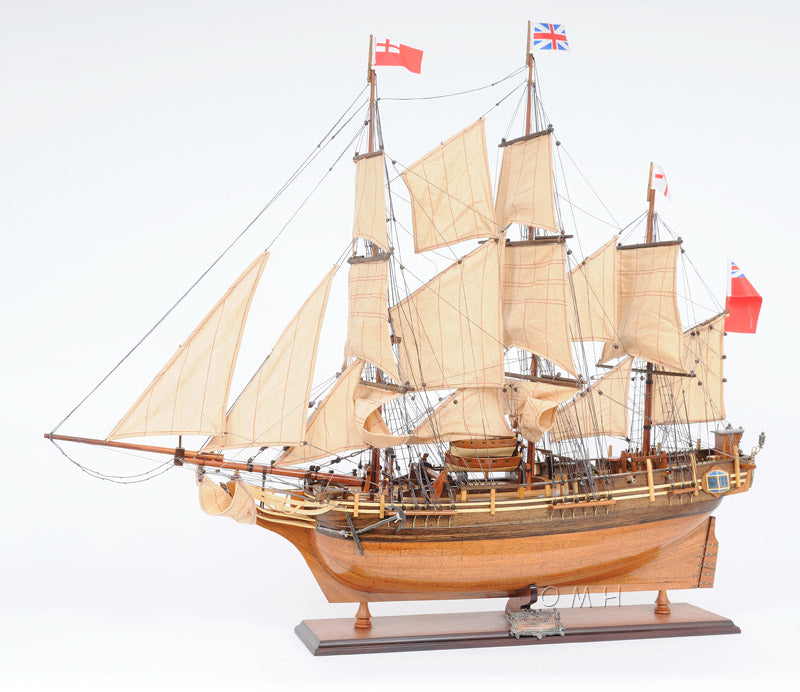HMS Bounty New Model Ship
- Regular Price
- $949.95
- Sale Price
- $949.95
- Regular Price
- $1,029.00
- Unit Price
- Translation missing: en.general.accessibility.unit_price_separator
This high-precision, fully-assembled replica of the renowned H.M.S. Bounty, immortalized in the classic motion picture "Mutiny on the Bounty," is a museum-quality masterpiece. Bearing a one-of-a-kind serial number etched into its hull, this Exclusive Edition allows us to track its production date, materials, and other specifications with ease. Crafted by hand using historical photographs, drawings, and plans, this highly-detailed model is made using premium materials such as red cedar, rosewood, and mahogany, and is built using the same plank-on-frame construction as actual ships.
This H.M.S. Bounty model ship presents two-toned wood on the hull, plank-on-frame construction and three decks. A remarkable bowsprit featuring brass statues and wooden panels complements the securely-rigged three large masts with hand-knotted lines and hand-stitched linen sails. Anchors and a rudder adorn the bow and stern, while the deck boasts metal cannons, handmade lifeboats, a wooden crane, windlass, bell tower, and more. The stern deck includes an admiral's quarter with metal lanterns, statues and brass ornaments.
Dimensions: 37" length x 10" width x 30" tall
A little history:
HMS Bounty, also known as HM Armed Vessel Bounty, was a small merchant vessel purchased by the Royal Navy for a botanical mission. HMS Bounty was originally named Bethia, built in Hull at the end of 1784.The Navy Board bought her on May 23, 1787, on the suggestion of Sir Joseph Banks, renamed her Bounty. June 8, 1787 was her first commission. She was 90 feet 10 inches long with a beam of 24 feet 4 inches and a draft of 11 feet 4 inches. She was sent to the Pacific Ocean to acquire breadfruit plants and transport them to British possessions in the West Indies under the command of William Bligh. That mission was never completed, due to a mutiny led by the acting Master, Fletcher Christian who sailed the ship to what is now called Bounty Bay and settled there. To prevent the ships detection, and anyones possible escape, the ship was burned on 23 January 1790.




















